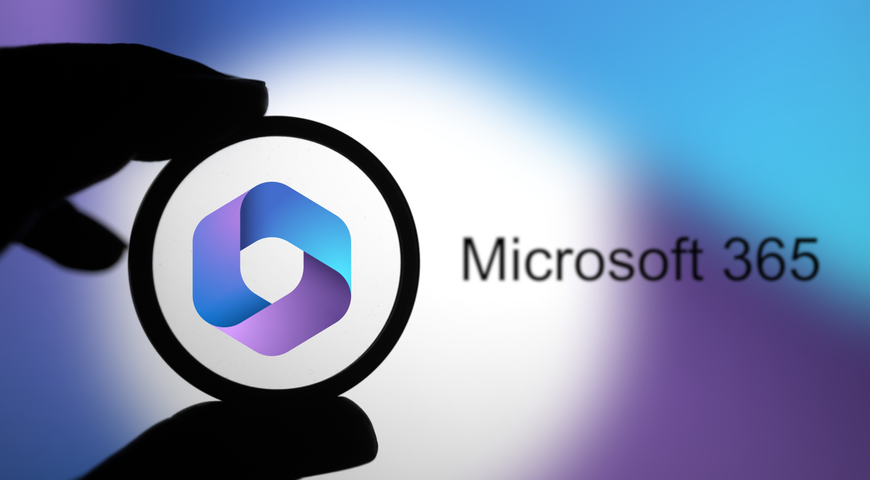
Efficient time management is fundamental to calculating and ensuring the profitability of your managed service provider (MSP) company when working with numerous clients. To have a successful business, you must learn how to effectively utilize resources to maximize the number of clients without neglecting service standards. If you want to constantly generate new clients and establish scalable growth, then you have to become a professional at time management.
Understanding Billable vs Non-Billable Hours: A Cornerstone of MSP Profitability
Understanding the difference between billable hours and non-billable hours is a key element that will unlock greater revenue and lead to better efficiency when working with your clients. What do billable hours mean? This is the time spent working on your client's project and the important tasks related to it. On the other hand, non-billable hours are internal tasks or activities that cannot be charged to clients; these activities can be administrative tasks or overhead projects that are not directly related to the client.
The symbiosis between billable and non-billable time must be kept in a balanced ratio in order for your company to stay profitable. Where your goal is to generate financial benefits, meet customer expectations, and control overhead costs.
Defining Billable Hours and Their Importance for MSPs
To maintain your company's profitability, you have to calculate how many billable hours are needed for every single project and, on this basis, send an accurate invoice to the client. Suppose you don't calculate the total billable hours. In that case, you may find yourself in a situation where the profit is insufficient to cover your hourly rate of profit expectations.
Many companies use time-tracking software to help count the hours worked on a particular project and calculate the amount they must charge their clients when the billable moment comes. As we know, MSPs work with many clients on different projects; some may need fewer work hours than others. Keeping the balance between billable and non-billable hours is critical for the well-being of your MSP company. Thankfully, time-tracking apps are here to help you with this task. They will provide visibility of time spent working on a particular project to properly define the billable hours that must be included in the invoice you send to clients
Common Billing Models Used by MSPs
Managed service providers (MSPs) use various billing models to meet the needs of their clients. Understanding the most common and widely used billing structures will help businesses choose the most suitable plan for themselves and improve their relationship with their MSP.
One of the most common charging models is the flat-rate pricing approach. Where clients pay a fixed monthly fee for a specified range of services, regardless of their actual usage. This billing method helps businesses plan their IT budgets effectively and simplifies invoicing for MSPs, which is a win-win for both sides.
The second pricing model we will discuss is per-user or per-device pricing. In this case, clients are being charged based on the number of users or devices supported by the MSP. It's a straightforward approach that scales with the client's business growth, making it easy for both parties to understand the costs involved. In simplified language, this means that the more users or devices you have, the more you will pay.
The next in line is tiered pricing, a model offering different service levels at various price points. Clients can choose a package that meets their needs and budget, ranging from basic support to comprehensive, all-inclusive services. This model allows MSPs to spread their services to a broader range of clients with different IT requirements.
Hourly or time-and-materials billing is another option. In this model, clients pay for the time spent on tasks or projects and any materials used. This approach is suitable for businesses with irregular or project-based IT needs, allowing them to pay only for what they use.
Finally, some MSPs offer a value-based pricing model. In this approach, the MSP charges based on the value delivered to the client's business rather than the specific services provided. This model aligns the MSP's incentives with the client's business outcomes.
Streamlining Billable Hour Tracking for Increased Efficiency
To expand your MSP business and boost profits, it's crucial to optimize time management and resource allocation. Having an accurate view of billable time enhances efficiency, reduces non-billable hours, and enables your team to handle a larger client base seamlessly.
Selecting the Right Time Tracking Tools for Your MSP
A digital time tracker is designed to record your working hours. It helps to simplify billing for clients and provides data to support your invoicing. MSPs need this software to increase efficiency, apply accurate billing, and manage time better. These time-tracking apps have some fundamental features, including time entry management, which outlines the start and end times of the time spent working on a particular project or task. Thus, MSPs monitor and track their billable hours chart more accurately because it is easy to lose track of the exact time spent working on a specific project.
Furthermore, these tools can provide every manager with detailed metrics, not only for the recorded hours worked but also for the project progress and other helpful information related to your employees’ work. In every well-managed firm, billable hours are monitored monthly to project cash flow and determine who is working and who is not, depending on the individual's results. As you can see, time-tracking software gives you a clear view of employee efficiency, creates invoices based on accurately recorded time spent working on a specific task or project, and presents analytics and insight to gain a deeper and more detailed understanding of productivity and project profitability.
For managed service providers (MSPs), time is more than just money—it's the foundation of their business operations. As you work on various client projects, it's crucial to have the ability to accurately track the time spent on every single task and project you are working on. But how do you choose the right time-tracking tools for your MSP? I bet you want to know the answer. So let's waste no more time, dive deeper, and have a clear view of the important features of time-tracking tools and their advantages.
Key Features to Look For in The Best Time Tracking Tool
When choosing a time tracking tool for your company, there are a few features that can make your life a lot easier, so let's mention them one by one:
- Ease of use: You must look for a tool with a simple, intuitive interface. It should be easy for your team to start and stop timers, log time, and navigate the software easily.
- Integration capabilities: Ensure the current tool integrates with your other software, such as accounting or project management platforms. This streamlines your workflows and reduces manual data entry, guaranteeing faster and more efficient time management.
- Flexibility: You must choose a tool to track time by task, project, or client. This flexibility lets you drill down into specific areas of work and gain deeper insights, leading to better profitability.
- Real-time reporting: Having access to real-time data is fundamental and will definitely help you make informed decisions on the fly and adjust your strategies as needed.
- Security and data protection: Every client will provide sensitive information, so you must look for a time-tracking tool that prioritizes security and compliance with industry standards.
It is paramount to find a time-tracking tool for your company that is able to provide you with all of the important features we mentioned; thus, you will know that you are equipped with a reliable tool capable of giving you all the metrics needed to track and maintain the profitability of your company.
Maximizing Billable Hours and Client Value
When looking for reasons why you are not delivering the expected minimum billable hours, there may be some reasons for this to happen. The most common of them are internal challenges like inefficiency, missing or neglecting key analytics and metrics, or working with non-profitable clients. If you want to maximize billable hours, there are some aspects that you can improve and scale your profits significantly from every client's case. Every company must establish and follow their billable hour requirements; overlooking and neglecting this aspect can lead to some serious financial losses for your company because the billable hours don't meet the targeted ones for the current project.
We will talk about some strategies that can work for you in order to maximize billable hours when working on different projects and, at the same time, leave the client satisfied. Let's get started.
Set targets for billable hours.
Before you can assess your team’s utilization rate, it’s a good idea to sit down and figure out how many billable hours your organization needs to record in order to be profitable. You can also do this on a per-project basis if your project load tends to fluctuate more frequently.
Once you’ve established team-wide billable hours targets, you can determine roughly how many billable hours each team member needs to log based on their varying hourly rate.
Track every single minute.
We’re all familiar with that feeling of finishing the workday and wondering, “What did I spend all day doing?” When your day is spread across several different projects and minor tasks, it can be easy to forget, which is why time tracking is so important.
Your natural intuition might be to focus only on tracking billable hours since you don’t need to invoice anyone for non-billable work. Doing this would be a mistake, as tracking every minute of your time is an excellent way to identify inefficiencies in your workflows — or even time that you’ve accidentally misclassified as non-billable.
For instance, maybe you have noticed that your employees are spending more hours than planned on administrative or other tasks that will not generate profit at the end of the day. Instead of allowing this resource inefficiency to continue, you may want to hire someone to take care of these responsibilities instead of allowing all your employees to waste time on such tasks. Thus, they can concentrate on their key responsibilities and record more billable hours and profits for your company. Tracking time is essential to ensuring your team can meet billable hour targets, which will lead to meeting your expected profits.
Optimize your time tracking.
Optimizing your time tracking is the most important aspect that will help you maximize your billable hours. Accurate time-tracking is fundamental for the profitability of every MSP. Having precise records of the time spent working on a particular project is the key to maximizing your profits when billing clients accurately. As you can see, having time-tracking software by your side is a must because you will be able to know exactly how much time you have spent working on a project and differentiate between billable and non-billable hours.
Automate routine tasks.
Automation will free up your employees time, allowing them to focus on more complex and high-value tasks for your clients. Also, this gives your team the opportunity to work on more projects, which would mean more profits for your company. Additionally, by automating repetitive tasks such as software updates or backups, you will boost productivity and definitely improve your clients satisfaction.
Offer tailored solutions
Every client would love to have a personalized service that meets their specific needs, because this way they will feel valued. Understanding their needs, challenges, and goals that they want to achieve will give you the opportunity to provide solutions that align with their business objectives. This will definitely add value to your services, but it will also encourage long-term partnerships. Furthermore, as we all know, a satisfied client will help you receive good feedback and reviews. This will ultimately help you start partnerships with new clients, resulting in increased profits for your company.
Evaluate and improve your services.
It is mandatory to regularly assess your processes and performance in order to identify areas for improvement. Many factors can be improved, even if your workflow seems perfect. Try to adjust your approach with the main purpose of serving your clients better, or find more efficient ways to complete your everyday tasks related to the workflow. As you see, continuous evaluation will help you stay one step ahead of your competitors. Trying to improve on a daily basis will definitely pay off in the long term.
Regularly assess your processes and performance to identify areas for improvement. Whether it's adjusting your approach to better suit client needs or finding more efficient ways to complete tasks.
How to Calculate Billable hours?
Calculating billable hours is quite simple; there is no need for complex and fancy calculations. To determine how much to charge a client for the service you have provided, the only thing you should do is multiply your billing rate by the number of billable hours you have recorded during your work on the client's project (invoicing period), which might be billed monthly or weekly. Include additional applicable taxes or fees on the invoice, and you will know the exact amount a client needs to be charged.
As we already mentioned, this calculation can only be done when you are currently using time-tracking apps, which gives you a clear view of the correct number of billable hours spent on a particular project. After reviewing the metrics from the time-tracking app, you can easily calculate the amount your client will have to pay.
Beyond Billable Hours: Measuring Success in MSP Services
Measuring your business's success is not only about the profit you generate. While billable hours are a key metric for tracking your company’s profitability, this is not the only indicator of successful performance. There are also other metrics to measure success in your MSP business. Are you curious about them? Let's mention them below:
Client satisfaction
The satisfaction of your clients is one of the most important metrics for your business. The more satisfied clients you have, the more new partnerships you will make. Your primary job is to meet and even exceed clients's expectations, because this is the only way to prove the value of your service. (billable work). Regularly checking in with clients to gather feedback and address any concerns can help you stay on top of their needs and expectations.
Service efficiency
This is another foundational metric for your work. Asking yourself questions like: Am I completing my work tasks and projects on time and within the planned budget? Am I completing my clients projects within the planned billable hours? The answer to these questions gives you the most important metrics when evaluating your work. Be sure that there is always room for improvement. For instance, monitoring your team's productivity will give you signs of things that you can work harder on. Keeping track of tasks and delivering services efficiently is another aspect that needs constant improvement. Because a well-organized team can complete tasks (billable tasks) in less time, maximizing profitability.
Client retention rates
These rates provide insights into the long-term success of your MSP business. A high retention rate indicates that your clients value your services. Conversely, a low retention rate may signal areas where your services need improvement.
Lastly, keep an eye on your business's growth. Expanding your client base indicates the effectiveness of your marketing and sales efforts. As your business grows, so will your opportunities to increase your billing rates and hourly rates, which can help you stay competitive and increase your revenue.
By evaluating these different aspects of your MSP business, you can gain a more comprehensive understanding of your overall success. Emphasizing client satisfaction, service efficiency, retention rates, and new business growth can help you set goals and develop strategies to ensure long-term success in the world of MSP services. Keeping an eye on these metrics will help you avoid losing track of potential revenue and add fees where necessary, ensuring each client's invoice reflects the quality of your services.
Utilizing Time Tracking Data for Strategic Decision-Making
As you can see, making informed decisions is the backbone of success. We all have seen examples of companies that overlook time-tracking data importance. And this could lead to serious implications for your business and even a loss of revenue due to poor management. By using such software for time tracking data, you will have comprehensive visibility into insights that help you make the right decisions for strategic planning, budgeting, and resource allocations that will definitely drive growth in your business.
Time-tracking data tools will provide you with valuable insights needed for planning your strategic efforts and identifying areas for improvement. But which are the areas being uncovered by the time tracking data tool that will help you make strategic decisions about improving your overall company performance?
Analyzing Time Allocation
Having time-tracking data software by your side simplifies the process of analyzing the time allocation of your employees. Thus, you will have the ability to allocate their working time across different projects and tasks. This way, you will have a clear picture of how their time is differentiated and if they spend more time than planned on non-billable tasks like administrative work rather than revenue-generating activities.
Evaluating Project Performance
This is another crucial benefit of having time-tracking data software; it enables you to easily evaluate project performance by comparing estimated time to actual time spent. Having access to such information will help you identify bottlenecks and inefficient activities and will open your eyes to improvement in future projects. This ultimately means that it will make your service better by giving you the opportunity to improve project management and enhance overall efficiency, which, as we see, is crucial for every successful organization.
If you notice that some projects or tasks consistently exceed the planned estimated time, you can investigate the reasons behind them and act to correct the process. It gives you the ability not only to spot problems but also to implement strategies to streamline processes and improve project results. This, of course, would lead to more sophisticated financial results.
Project planning and cost estimation
Analyzing time-tracking data from previous projects is pivotal to accurate project planning and cost estimations for future tasks. We know this is critical to maintain your business's desired profitability. Providing such valuable insights as the actual time and effort required to complete your scheduled projects will help you estimate the actual project costs.
Identifying high-value projects
Another critical benefit of using
time-tracking data software is that it will help you identify projects that generate
the biggest profits for your company or have high levels of customer
satisfaction. By analyzing this data, you can determine the projects that will
be more beneficial and have the greatest potential for success and then
allocate your resources accordingly.
Conclusion: Mastering Billable Hours for a Thriving MSP Business
Keeping your MSP company successful and profitable is not an easy task. To accomplish this, it is absolutely mandatory to master the concept of accurately calculating billable hours and successfully balancing your resource management. As a business owner, your main purpose is to find the sweet spot between client satisfaction and efficient time management, which will ensure the profitability and longevity of your MSP company. Understanding how to effectively utilize resources to maximize the number of clients you can work with without sacrificing service standards is key to a scalable growth strategy.
This is why you can't afford to neglect to find the perfect balance between billable and non-billable hours when working with clients. As you can see, time-tracking apps can make a massive difference because using such software will give you the most accurate information about the time spent working on a client's project and being paid fairly for your service. Having such a tool by your side is a blessing, helping you count every single minute spent working on a particular project or task. Thus, when it comes to billing your clients and sending them the invoice for the work done, you will know they receive the fair amount they have to pay—neither more nor less.
Such automation software is widely used in almost all kinds of businesses. For example, MSPs can be beneficial even for clients who own law firms by helping calculate their attorney billable hours chart. This simplifies the calculation of every lawyer's billable hours worked on a different law case. Most law firms have implemented such software in their work process because of its effectiveness in preventing any loss of revenue.
Not only do law firms implement it in their billing strategy, but all kinds of companies with legal professionals provide different types of services. Measuring the exact time spent working on a specific task is vital for keeping your company's profitability. As you can see, mastering the billable hours strategy is a fundamental part of every business because you can predict profits from a particular project, prevent any loss of revenue and have better time management. This type of software is an inevitable part of every successful business, from the smallest legal professional organizations managed by one or two persons to the largest companies in the world
About Acronis
A Swiss company founded in Singapore in 2003, Acronis has 15 offices worldwide and employees in 50+ countries. Acronis Cyber Protect Cloud is available in 26 languages in 150 countries and is used by over 21,000 service providers to protect over 750,000 businesses.



